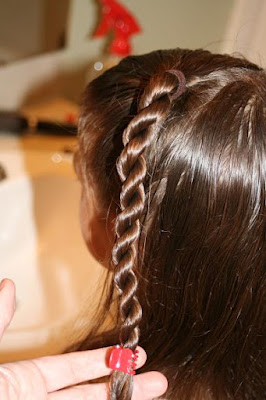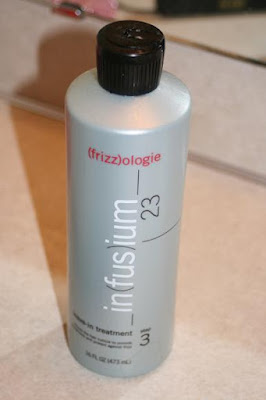
While flipping through the stack of cookbooks that I have borrowed from the library, I chanced upon this quick & easy-to-make cinnamon teacake recipe from this
book. I love to browse through cookbooks from The Australian Women's Weekly series. The recipes are simple to follow and most of the time they are accompanied with beautiful illustrations...every single photo is shouting for my attention! After looking through the list of ingredients and the nutrition information, I was pretty set to give the recipe a go. The total amount of fat for each serving is 9g, which is even lower than that of a single cookie featured in the same book. It makes me feel less guilty to bake it , as I usually won't stop at just one slice of cake.
As with coffee cakes, in the past, I used to think that tea cakes are cakes made with tea as one of the key ingredients. Silly me! Now I know, they are just cakes or even breads served for afternoon tea. Although coffee cakes are either cakes that are made with coffee or referred to as any cakes that are served with coffee, a teacake could mean different thing to people living in different regions. In Australia, a teacake is typically referred to as a sweet cake made with flour, eggs, fat and sugar. They are sometimes sprinkled with a mixture of cinnamon and caster sugar, and are often served warm from the oven, with tea. Since my kids have yet to acquire the taste of cinnamon, I tweaked the recipe a little...I left out the cinnamon and only sprinkled the cake with caster sugar. To add flavour, I added in a teaspoons of dried lavender. So, here's my version of a Lavender Teacake:

It proves to be a very easy cake to prepare. I made it with just a mixing bowl and a wooden spoon. Of course you can use a manual whisk, or leave it to your electric mixer to do the job. If you are going 'manual', do make sure the butter is very soft before you start working on it...unless you don't mind working on your biceps at the same time. I got the cake into the oven within 20
mins, which was 5
mins longer than the preparation time stated in the recipe. I will have to learn to be more efficient.
Although the cake was not as moist compared to cakes made with 'moisturising-agents" such as yogurt, buttermilk, etc, I thought the taste was very delectable. The cake was rather light and I like the nice fragrant of the lavender. It's just a little on the sweet side for me...which is mainly due to the generous sprinkling of caster sugar on the cake surface. On hind sight, I should have added some lemon zest to kick up the flavour a little.

Here's a slice of cake for all of you who have taken the time to leave me your heart-warming comments and encouraging words after I published my earlier post. I'm truly touched by the kind words of encouragements...it certainly boost up my morale, and made me see the light at the far end of the tunnel. Even if you didn't leave a comment, I thank you for taking time to read and come over to my humble blog :)
From your comments, I got to know that a couple of you have actually picked up the hobby of baking after reading my blog :D It also brings me great joy to learn that some of you had started making homemade breads following the recipes I have posted here. The one and only concern that I have is that, I hope I am not the blind leading the blind. Till now, I do not know whether I am doing the kneading of the dough correctly :')
So, what are you waiting for? Go grab your spoon and enjoy!
I mean, go grab your wooden spoon and start baking!
Ingredients (makes one 20cm cake, serves 8)
60g butter, softened at room temperature
1/2 cup (110g) caster sugar
1 egg, lightly beaten
1 teaspoon vanilla extract
1 cup (150g) self-raising flour
1/3 cup (80ml) milk
1 teaspoon dried lavender*
topping:
15g butter, melted
some caster sugar
Method: - Preheat oven to 180 degC. Grease and flour side of a 20cm (8") round pan, line base with parchment paper. Sift self-raising flour, set aside.
- In a mixing bowl, with a wooden spoon or a manual whisk, beat butter and sugar till light and fluffy. Add in the egg gradually, beat well each time egg is added. Add in vanilla extract, mix well.
- Add in shifted flour and milk, stir with a spatula until smooth. Stir in dried lavender.
- Spread batter into prepared pan, bake for 25mins till the cake turns golden or until a skewer inserted into the centre comes out clean.
- Stand cake in pan for 5 mins. Turn onto cooling rack, brush top with melted butter and sprinkle with caster sugar. (*Note: If desired, omit dried lavender, instead, mix 1 tablespoon of caster sugar with 1 teaspoon of ground cinnamon and sprinkle the mixture on top of cake after brushing the surface with the melted butter.)
Recipe source: The Australian Women's Weekly,Food We Love 


























































